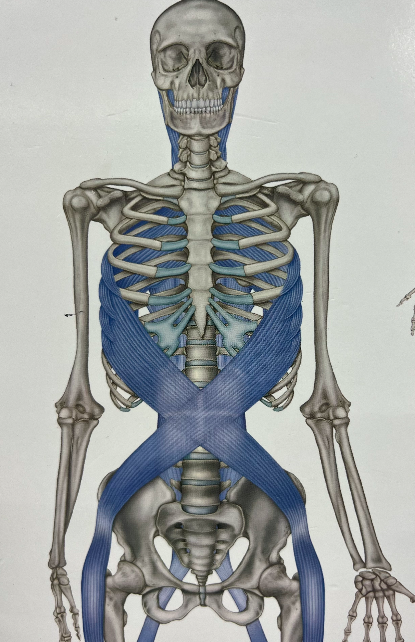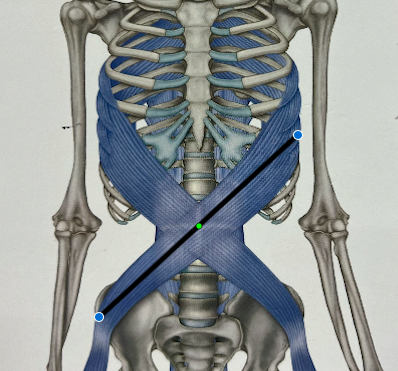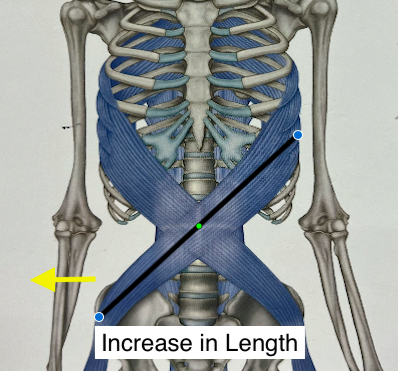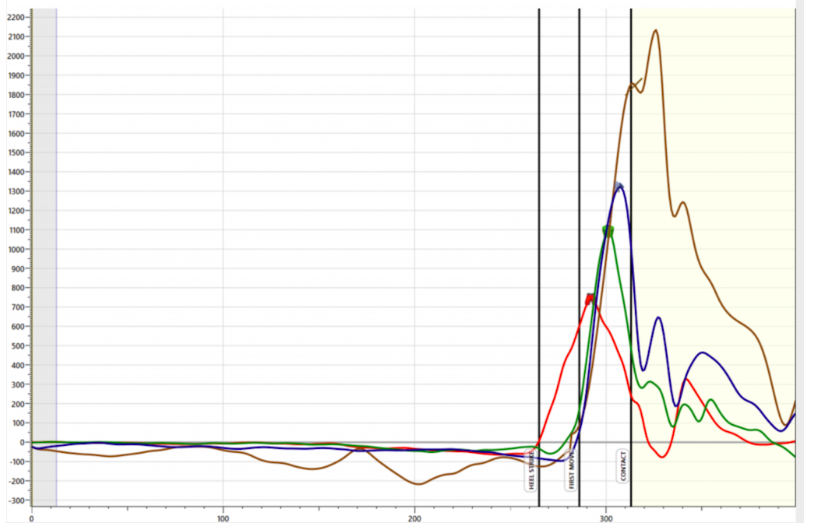When it comes to human movement Newton’s laws are undefeated. These are things we don’t think about all that often but they govern every single thing that we do as we walk the face of the earth. Let’s do a brief refresher of newtons three laws of motion. I just pulled this from Google.
In the first law, an object will not change its motion unless a force acts on it.
In the second law, the force on an object is equal to its mass times its acceleration.
In the third law, when two objects interact, they apply forces to each other of equal magnitude and opposite direction.
There will be other times when I talk about the first law, and the second law in this article, but let’s zoom in on the third law for a moment.
When two objects interact, they apply forces to each other of equal magnitude and opposite direction.
Let’s rewrite that same sentence with pelvis and rib cage inserted into it.
When the pelvis and ribcage interact, they apply forces to each other of equal magnitude and opposite direction.
it may seem obvious that this would be true since the pelvis in the rib cage are both objects and we don’t live on some dimension where newton’s laws don’t work. But trust me when I say to many it’s not obvious.
The anterior oblique sling connects the left side of our pelvis with the right side of my rib cage, and on the other side, the right side of our pelvis with the left side of our rib cage. The below picture shows where the muscle fibers of the obliques connect and where they lead to. This is a visual of the spiral line from the book Anatomy Trains by Thomas Myers.

As you can see, one side of the pelvis connects to the opposite side of the rib cage in an X shape. When we rotate the pelvis one direction, one side of the X gets long and the other side of the X gets short, when we rotate the pelvis the opposite direction the side of the X that’s long become short and the side of the X that short becomes long.
I’m going to rewrite that exact same paragraph with pelvis and rib cage switched because the exact same thing is true when the rib cage rotates as when the pelvis rotates.
As you can see one side of the pelvis connects to the opposite side of the rib cage in an X shape. When we rotate the rib cage one direction, one side of the X gets long and the other side of the X gets short, when we rotate the rib cage the opposite direction the side of the X that’s long become short and the side of the X that short becomes long.
This is the way our body moves during rotation. The pelvis rotates toward the pitcher for hitters, and toward home for pitchers creating length potential on one side of the X, and contracting the other side of the X. Then, after the motion begins the side of the X that stretched flips. This video will give you a little bit better visual of how it works when you’re actually throwing or hitting.
OK, now that we understand the way the pelvis and rib cage are connected now we can begin to loop in newtons third law. Every force has an equal and opposite force. So if I’m just looking at one side of the X. See below.

in the pelvis rotates to the left lengthening the distance between the two points above.

This means 3 things, 1) muscles are moving the pelvis rotationally in the direction of the arrow. 2) muscles are holding the rib cage in place as the pelvis moves 3) These two forces are of equal magnitude and opposite direction.
if the pelvis turns fast enough and far enough, the force that it puts on the rib cage will literally move the rib cage. This is the initial goal of what we’re trying to do in the beginning of rotation. However, once the rib cage begins moving and continues to speed up through the contraction of the oblique that was lengthened (the side of the X that was stretched) that force the decelerates the pelvis. Since the forces between the two segments are always equal and opposite, whatever I do to one, I do the opposite with the other during connected movement. Is it possible to move both in the same direction in connected movement? Yes, but only when they’re accelerating in opposite directions. The pelvis and rib cage moving in the same direction and them accelerating in the same direction are two very different things. Acceleration is a measure of the rate at which velocity changes. Velocity is just speed with direction. When each thing is moving in the same direction we’re talking about velocity. Acceleration is the (math word alert) derivative of velocity. Which basically means it’s the measure of how fast velocity is changing. If you want to get really nerdy here’s an explanation of what a derivative actually is. Don’t feel like you have to watch the video it’s only there if you really wanna get in the weeds.
So essentially, a derivative is the measure of a slope at a given point. So a graph that is going up has an acceleration that is positive and a graph that’s going down has an acceleration that’s negative.
Here’s an example of what a K vest example graph would look like. K vest is a motion capture of technology that we used to quantify how athletes are moving different body parts within their movement. It puts a sensor on the pelvis, the rib cage, lead arm, and the lead hand.

Each line on the graph represents a different body segment, red is the pelvis green is the rib cage, blue is the lead arm, and brown is the hand. The X axis is time in milliseconds, and the Y axis is velocity in degrees per second.
Let’s not get lost in the weeds on this because there’s a lot to digest here but you can see that as the pelvis peaks and then begins to slow down quickly, immediately following that the green rib cage line shoots up. This lays out in front of us the relationship between the deceleration of the pelvis and the acceleration of the rib cage. Detailing the oppositional relationship between the two. This is a velocity graph not an acceleration graph. Anything that is above zero means it’s moving in the direction of the pitcher (since this is a hitting graph but pitching would look very similar).
The K-Vest graph that we showed above is is a velocity graph, it measures how fast each body part is moving in degrees per second. Acceleration graphs use different units, degrees per second squared. So we can talk about acceleration, but only really by estimating the slope of the line.
What you’ll notice is that the rib cage and pelvis are almost never accelerating in the same direction in the K Vest ideal graph.
This tracks with what we know about human movement, and what we know about physics. Every force that we use in rotation has an oppositional force on the neighboring segment. Sir Isaac newton is not wrong just because we’re playing sports.
Thanks for Reading,
Kurt Hewes
Founder and CEO of Ignite Baseball

Great explanation! So helpful to get the visuals- thank you